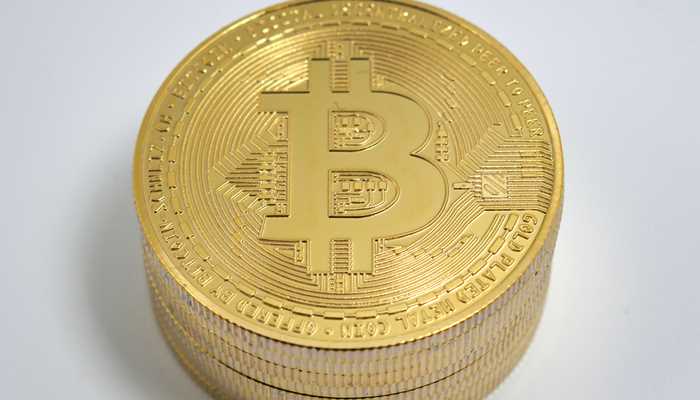Why the Bitcoin Stock-To-Flow Model Should Matter to You
Everyone seems to be talking about Bitcoin. Well known as the Godfather of all cryptocurrencies, Bitcoin can’t seem to stay out of the headlines. Maybe it’s an all-time high, a new government regulation, or an update to the blockchain — who knows?
If you’re trying to get into cryptocurrency investing, you might be interested in the stock-to-flow model, a tool for predicting the price of Bitcoin. By the end of this 7-minute guide, you’ll know exactly how to get started in the crypto markets.
What are Bitcoin and cryptocurrency?
It’s easy to get Bitcoin and cryptocurrency confused since they’re often discussed in the same conversations. But there is a critical difference which we’ll dive into first.
What is cryptocurrency?
Cryptocurrency is digital money. Like the fiat currencies we’re all used to, cryptocurrencies can be:
- Used to sell or buy goods.
- Traded for profits.
- Held long-term as investments.
Unlike the currency in our pockets, however, cryptocurrencies aren’t regulated by centralized authorities. Think banks, governments, etc.
Instead, the users of a coin are its regulators. We achieve this through blockchain technology. The blockchain is a transaction ledger that updates simultaneously on a network of computers worldwide. Every ‘block’ of transactions is cryptographically secured by the one before, making blockchains almost impossible to compromise.
What is Bitcoin?
Bitcoin ($BTC) is the first cryptocurrency ever introduced to the world. In 2009, after a global financial crash, a mysterious person (or group of persons) under the pseudonym Satoshi Nakamoto created the first-ever blockchain. The crypto that ran through its pipes to this day is called Bitcoin.
Bitcoin is a deflationary currency, meaning it’s limited in supply. According to the rules set out in the Bitcoin whitepaper, only 21 million Bitcoins will ever exist. This scarcity has led to many referring to $BTC as a store of value (like gold and silver) rather than a medium of exchange (like fiat money).
What is the Stock-to-Flow Model?
The stock-to-flow (S2F) model is a formula you can use to predict the prices of commodity resources — things like gold and silver. Given that these resources have limited supply and low flow, we tend to think of them as stores of value.
The stock to flow model measures the stock to flow ratio. Stock refers to how much of the resource is in circulation or available. Flow refers more to the frequency of supply injections:
SF = Stock / Flow
Another way of measuring stock to flow ratio (or SF) is by taking the inverse of the supply growth rate:
SF = 1 / growth rate of supply
A higher SF ratio means greater scarcity, which typically means the resource becomes more valuable. That means you can use the stock-to-flow model to predict the price of a commodity or scarce resource — like Bitcoin.
How Do You Use Bitcoin’s Stock-to-Flow Model?

Image from PlanB | @100TrillionUSD on Twitter
Bitcoin’s stock-to-flow model predicts — surprise, surprise — the price of Bitcoin. Since a limited number of Bitcoins are mined per year, and there’s a cap of 21 million Bitcoin, the crypto world’s ‘digital gold’ fits the criteria for scarce commodities.
The Bitcoin Stock to Flow Model was First introduced by a Dutch investor under the pseudonym PlanB. It accounts for the number of new Bitcoins mined in every transaction block. That includes the halving events: every 210,000 blocks, the number of Bitcoins that miners receive for mining a block halves.
An added benefit of the S2F model for Bitcoin is the deflection chart. By taking the ratio of Bitcoin’s current price on the market to its predicted price, you can derive the S2F deflection. The model predicts that if S2F deflection is greater than 1, $BTC is overvalued. If it’s lower, Bitcoin’s price is undervalued. Many crypto investors rely on these metrics to determine which Bitcoin price to buy and sell.
How Reliable Is The Bitcoin S2F Model?
The Bitcoin S2F model has gained popularity due to its accuracy over two Bitcoin halving events. (And a bull market run in 2019). However, the model predicts a value of $BTC value of $100,000 before the end of 2021. And it doesn’t help that Bitcoin S2F deflection is higher than it has ever been. There may be a few factors driving this deviation from the S2F model:
- Changing adoption rates because of the COVID-19 pandemic.
- The United States’ printing of $4 trillion in new money.
- NFT popularization makes crypto more mainstream.
Despite this, many still believe the S2F model is a reliable metric to predict the price of Bitcoin. Since the model relies on core principles, it remains a solid tool for Bitcoin price prediction.
Start Creating Passive Crypto Income Today
Calculating S2F, following complex models, and timing your crypto purchases and sales can seem like a lot of work. That’s because it is! Despite the predictability that the S2F model offers, the crypto markets are still volatile.
Want to make passive income every day instead of holding long-term investments in coins like Bitcoin or Ethereum? Consider The Plan by Dan Hollings. Through years of research, experimentation, and millions of dollars, marketing guru Dan Hollings has outlined a crypto bot strategy to turn crypto market volatility into money in your pocket.
Want to know more? Sign up to learn all about The Plan today!
Frequently Asked Questions
What is the Bitcoin stock-to-flow model?
The Bitcoin STF model is a method of predicting the price of Bitcoin. It takes account of the supply of Bitcoin in circulation (its market cap) and its level of production. By comparing these two figures, the model can determine the coin’s scarcity and determine its price.
Is the Bitcoin stock-to-flow model accurate?
The $BTC stock-to-flow model has historically been accurate since Bitcoin’s last two halvings. However, since 2021, the model has been deflecting from the actual prices more than ever before. Because of the renewed interest and adoption of crypto, the model may be outdated.
How do you calculate stock-to-flow?
The stock is the current supply of a commodity in reserve (or in existence, as with Bitcoins). Flow refers to the production of new units of that commodity over a period of time. Dividing stock by flow gives the SF ratio, where a higher number means greater scarcity and value.
When did Plan B create the stock-to-flow model?
Semi-anonymous Dutch investor PlanB created the stock-to-flow model for Bitcoin in March of 2019.







